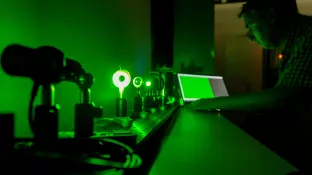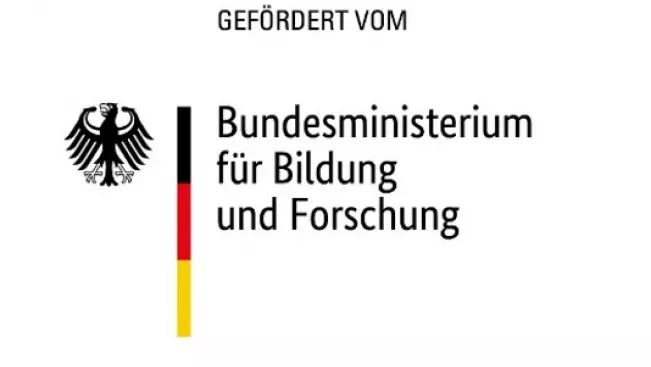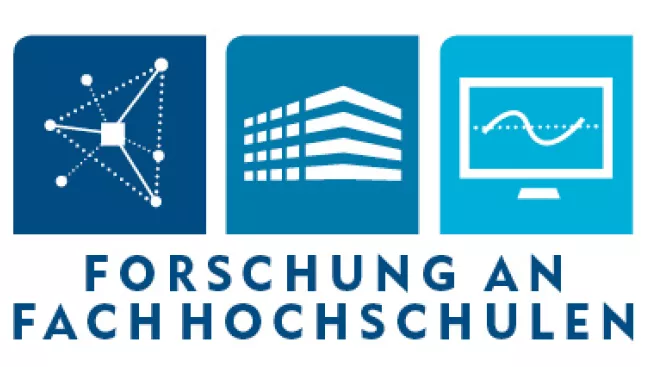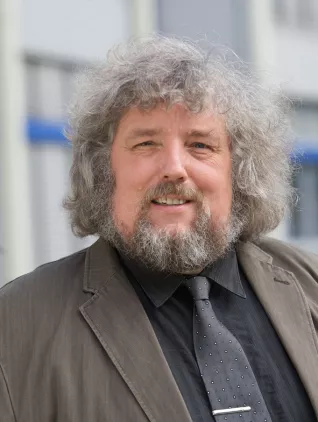ROSE3D - Robust and Safe 3D Camera System
Research project at a glance

Departments and Instituts
Funding type
Period
01.01.2024 to 31.12.2027
Project Description
The technical feasibility of 3D ToF cameras was first demonstrated at the turn of the millennium, and they have been increasingly used in automation technology for the past 10 years. The technological, commercial breakthrough has been taking place for 3 years with the introduction of mobile devices. Despite the great application potential of the existing technology, there are limitations in the intended area of application (sunlight is critical), the range, the recording speed and in specific measurement errors that can occur with multiple reflections within the scene. Today's technical limitations still prevent the widespread use of optical 3D ToF cameras, particularly for safety-related applications such as the safe area monitoring of production robots or sensors for driverless transport systems.
While current commercial developments are primarily dedicated to miniaturisation for use in smartphones and address innovations in the ToF image sensor, this project will focus on a new type of lighting. In contrast to the state of the art, this could not illuminate the scene homogeneously, but locally modulated. This creates the possibility of a localised increase in range and also the potential for redundant data analysis of triangulation information.
A modern two-photon polymerisation printer (TPP), which can be used to print nano- and macro-optics, has been available at Bonn-Rhein-Sieg University of Applied Sciences since 2022. This allows us, for example, to develop and produce diffractive and holographic optical elements (DOEs, HOEs). These can be used to modify the intensity profile of laser illumination (e.g. VCSEL arrays) in such a way that lens vignetting is compensated for or that image areas of particular interest are specifically illuminated. Together with commercially available ToF image sensors, we will develop innovative beam profiles that simultaneously enable time-of-flight evaluation and triangulation evaluation. The current project is creating new, reliable solutions for safe sensor technology that can protect people in everyday and working life (safety applications in manufacturing, collision avoidance in vehicles).
Publications
2025
Elias Ellingen, Robert Lange:
Beam Shaping of VCSEL Arrays Using Randomized Microlens Arrays with Integrated Collimation.
PDF Download (CC BY 4.0) doi:10.1109/JPHOT.2025.3603888 urn:nbn:de:hbz:1044-opus-91955
BibTeX | RIS
Bastian Stahl, Alexandra Mielke, Robert Lange:
Planar3D-CamEval – Comparative 3D Camera Performance Evaluation on a Flat Wall.
doi:10.21227/1h5f-g273 URL
BibTeX | RIS
Bastian Stahl:
Verbesserung der Performanz und Zuverlässigkeit von 3D-Laufzeitkamerasystemen.
PDF Download doi:10.18418/opus-8842 urn:nbn:de:hbz:1044-opus-88428
BibTeX | RIS
Elias Ellingen:
Entwurf, Herstellung und Verifikation von angepassten Strahlformern für aktive 3D-Messsysteme mit Multi-Emitter-Beleuchtungssystemen.
PDF Download doi:10.18418/opus-8836 urn:nbn:de:hbz:1044-opus-88368
BibTeX | RIS
Cooperation partners

Sponsors






